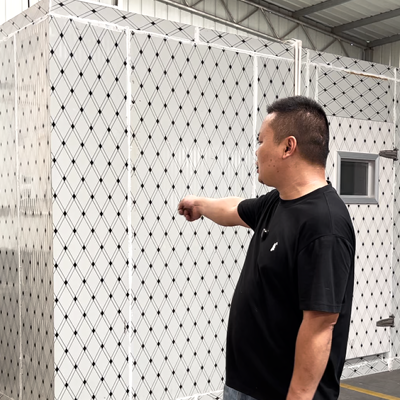First, the working principles are different
The compressor speed of the fixed-frequency unit is fixed (only the rated speed), and the cooling capacity is controlled by "start and stop" : when the temperature in the cold storage is higher than the set value, the compressor starts, and stops when the set value is reached, relying on the insulation of the cold storage to maintain the temperature. The variable frequency unit regulates the compressor speed (usually 30%-100% of the rated speed) through a frequency converter, and adjusts the speed in real time according to the temperature fluctuations in the warehouse. There is no need for frequent starts and stops, achieving continuous adaptation of cooling capacity.
Second, energy consumption and operating costs are different
The energy-saving advantages of variable frequency units are significant: when fixed-frequency machines start and stop, there is a "peak starting current" (about 3 to 5 times the rated current), and more energy is consumed when the warehouse temperature rises after shutdown and then starts again. The speed of the frequency converter changes smoothly, avoiding energy loss during start-up and shutdown. It operates at a low speed under light load (such as when the warehouse temperature stabilizes and the speed drops below 50%), and its energy efficiency ratio (COP) is 30% to 50% higher than that of the fixed-frequency converter, resulting in lower long-term operating costs.
Third, the temperature control accuracy and stability are different
The temperature control of the variable frequency unit is more precise: Due to the start-stop adjustment of the fixed-frequency unit, the temperature fluctuation range of the warehouse is usually ±2-3℃. The frequency converter can control the fluctuation range within ±0.5-1℃ through fine-tuning the rotational speed, making it suitable for temperature-sensitive scenarios (such as pharmaceutical cold storage and fresh food preservation storage). Meanwhile, the frequency converter has no frequent start and stop pressure shock, making the system run more smoothly. The temperature fluctuation in the warehouse is small, which is conducive to maintaining the quality of goods storage.
Fourth, the initial cost and maintenance are different
The initial procurement cost of fixed-frequency units is low (about 70%-80% of that of variable-frequency units), with a simple structure and fewer maintenance components. Due to the addition of frequency converters, precision controllers, etc., the initial cost of frequency conversion units is relatively high. However, they operate smoothly, reduce the wear of compressors during start-up and shutdown, have a lower failure rate, and the long-term maintenance cost is relatively controllable. In addition, frequency converters have higher requirements for the stability of power supply voltage and need to be equipped with voltage stabilizing devices.


